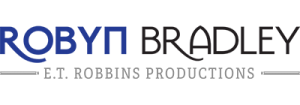Example of a Good Headline, But Failed Execution
I once saw an interesting banner hanging over a heavily trafficked street with an example of a good headline:
MAKE YOUR MOLE FAMOUS.
It certainly got my attention. (The first thing that flashed through my mind was Cindy Crawford’s mole, followed by the actual animal.) The sub-headline indicated it was for some sort of research study, but I couldn’t get all the info without causing an accident. (This was a while ago, 2009 or so.)
“Make your mole famous” is a great headline example, much more exciting than something like “Be Part Of a Mole Study” or “Be Part of a Research Study.” So kudos to the copywriter who came up with the creative headline.
However, here’s where the marketing campaign broke down.
I’m pretty sure the research study was being sponsored by an organization called “SMOC” because I spotted the acronym on the banner. However, when I googled things like “mole research study” + “SMOC” + my town’s name, nothing came up at the time. Same if I googled the headline with quotes around it. Same if I simply googled “mole research study Massachusetts.”
What if someone saw the banner and the compelling headline and decided they wanted to be part of the study, but they didn’t want to risk getting into an accident to see if said banner had contact info? What if they googled later and couldn’t find anything about it?
Ugh! Talk about a missed opportunity.
Here’s how the marketing campaign should have been executed:
First, the copywriter should have kept the copy under the headline simple. Something like “New research study. Learn more at . . .” followed by a clear, memorable URL that most people couldn’t miss while driving.
The URL should deliver on its promise. It should either be THE page on the study or clearly link to it. The page’s title tag should look something like this: Make Your Mole Famous | Mole Research Study | Massachusetts. That should cover a variety of searches. The content on the page should be thorough, repeat the headline, and provide details about the study.
The marketing team should have secured MakeYourMoleFamous.com. (At the time, it was available . . . I checked.) Even if the folks associated with the study didn’t want a separate site, they could have redirected it to the page about the mole study.
The team should have also considered running paid ads (PPC ads) around phrases like “Make your mole famous” and “mole research study” (etcetera) for however long the physical banner over the street stayed up.
Having a compelling headline isn’t enough.
Think through every step your prospect/customer must take to complete the call to action, whether that’s buying something or signing up for a research study. Don’t make these steps hard—make them as easy as possible.
If you’re a copywriter or content writer, you can (and should) speak up when you see a marketing campaign derail. Don’t just “write copy” and call it a day. Make yourself invaluable by asking probing questions:
- What do we want people to do when they see this banner?
- Are we making it easy for them?
- What website are we sending them to?
- Will they be able to find it in search?
And so forth. AI can’t do this thinking stuff, but you can.
Want to learn how to write great headlines?
Start with these two excellent articles from Copyblogger:
I also highly recommend The Copywriter’s Handbook by Robert W. Bly. (The link is an Amazon affiliate link. I’ll earn a small commission if you buy it, but it won’t cost you more.) Chapter 2 is all about headlines and subject lines.
